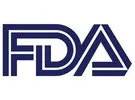 The U.S. Food and Drug Administration (FDA) has provided an update on the status of the investigation of Cyclospora cayetanensis illnesses tied to the consumption of bagged salads. This update is not just on the number of cases, but also on the scientific progress we’ve made in using a new method developed and validated by the FDA to sample for Cyclospora in agricultural water for the first time in a field investigation.
The U.S. Food and Drug Administration (FDA) has provided an update on the status of the investigation of Cyclospora cayetanensis illnesses tied to the consumption of bagged salads. This update is not just on the number of cases, but also on the scientific progress we’ve made in using a new method developed and validated by the FDA to sample for Cyclospora in agricultural water for the first time in a field investigation.
This method was used in our current investigation and may be instrumental in our efforts to better understand the dispersion of the parasite in the environment, which could help prevent future outbreaks. The collective work by public health officials to get these new findings demonstrates a commitment to innovation and science in the service of public health and the importance of strong federal and state coordination on food safety work.
Even as our agencies continue to respond to the COVID-19 public health crisis, teams of experts from the FDA and the Centers for Disease Control and Prevention (CDC) have continued to respond to a threat of a different kind – a nationwide outbreak of Cyclospora illnesses. Cyclospora cayetanensis is a parasite that is so small it can only be seen with a microscope. It causes an intestinal illness called cyclosporiasis from the consumption of contaminated food, mainly fresh produce, or contaminated water.
Ongoing Investigation Update
FDA’s Coordinated Outbreak Response and Evaluation Network (CORE) and CDC today updated the case numbers and the status of the investigation, which advances what we know about Cyclospora, based on the three key parts of every food outbreak investigation:
Epidemiology linked the illnesses to bagged salad produced by Fresh Express. The number of reported cases of Cyclospora typically rises during May through August. Although CDC conducts surveillance for cyclosporiasis year-round, during the spring and summer months CDC conducts enhanced surveillance for cases of domestically acquired illness. In this outbreak, CDC has reported 690 cases across 13 states, with 37 hospitalizations and no deaths. Onsets of illness range from May 11, 2020 to July 20, 2020. Salads made by Fresh Express and containing iceberg lettuce, red cabbage, and carrots were identified as the food vehicle responsible for the outbreaks.
Traceback of cases with the strongest sources of information (shopper card info, etc.) revealed that bagged salad codes most likely to have resulted in illness contained iceberg lettuce from California and red cabbage from Florida. The FDA evaluated and investigated each of the ingredients in the bagged salads, identifying red cabbage from Florida and iceberg lettuce from California as those most likely in the bagged salads consumed by people who became ill. Traceback investigations are time-consuming work but are critical. In this instance, in the wake of traceback and collaboration with the retailers to recall product, FDA identified a noticeable decline in illnesses that matched the time period in which cabbage sourcing shifted from Florida to another area, providing a possible clue in the investigation.
Environmental sampling detected the presence of Cyclospora in the surface water of a canal near a farm suspected of being a source of the red cabbage. Two samples collected to the north and south of where the farm accessed canal water for seepage irrigation were found to be positive for Cyclospora cayetanensis. The farm that supplied red cabbage was no longer in production at the conclusion of the growing season, so it was not possible to sample product. Additionally, the farms growing iceberg lettuce in California were investigated and all of the samples collected in California were negative for Cyclospora.
Given the emerging nature of genetic typing methodologies for this parasite, the FDA has been unable to determine if the Cyclospora detected in the canal is a genetic match to the clinical cases, therefore, there is currently not enough evidence to conclusively determine the cause of this outbreak.
Advancements Aiding the Investigation
The FDA has pioneered ways to detect the parasite that have been employed in this outbreak investigation, developing and validating new methods to test for Cyclospora in produce and agricultural water. The first of these new methods was used in 2018 to confirm the presence of the parasite in a salad mix product tied to an outbreak that sickened hundreds of people.
In July 2019, the FDA made its second major advance in Cyclospora detection, completing studies that resulted in a novel, validated method to test agricultural water for the presence of the parasite. These new methods were developed by the Foodborne Parasitology Research Program that the FDA established in 2014 in our Center for Food Safety and Applied Nutrition, in part to break the cycle of recurring Cyclospora outbreaks.
Strong federal and state coordination on matters of public health are critical. In identifying clinical cases of Cyclospora, assisting in providing traceback records and completing investigations in processing facilities and growing fields, our state partners’ work has proven essential to this investigation. We continue to work to strengthen these vital public health partnerships and federal agencies continue to work together to advance additional tools needed to assist with these investigations. For example, CDC is piloting the use of a genotyping tool to help identify cases of parasitic illness that might be linked to a common source.
For the full report, check the FDA website.
